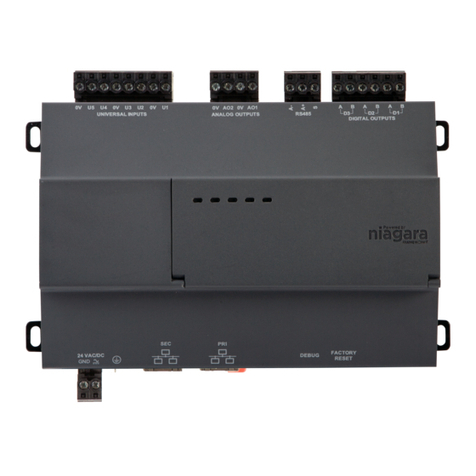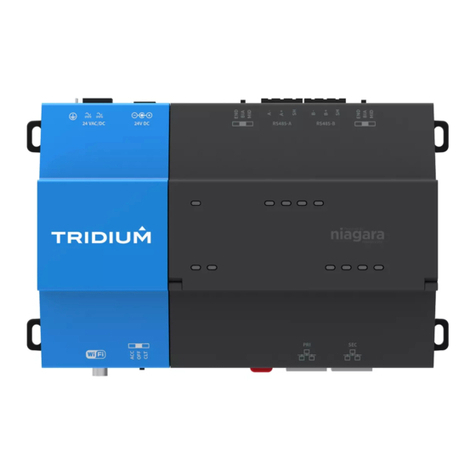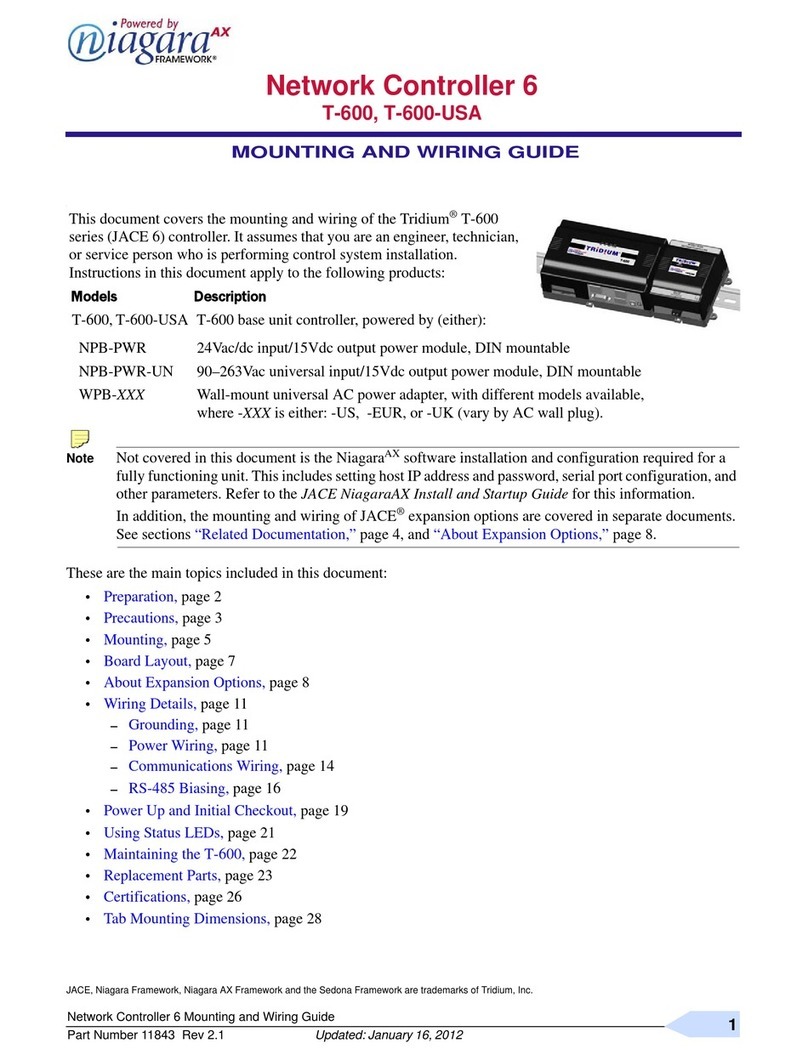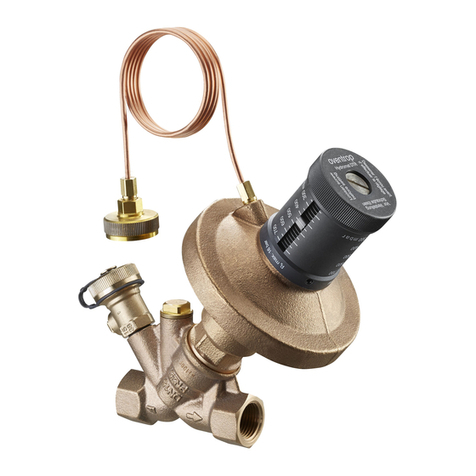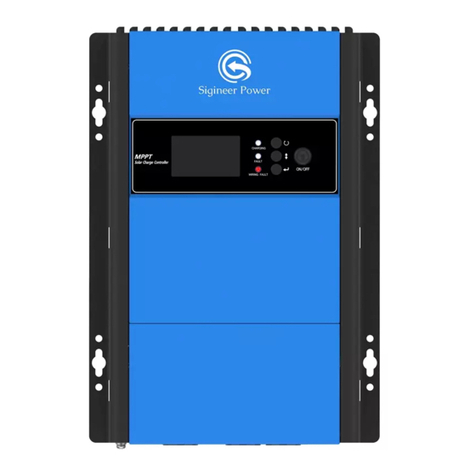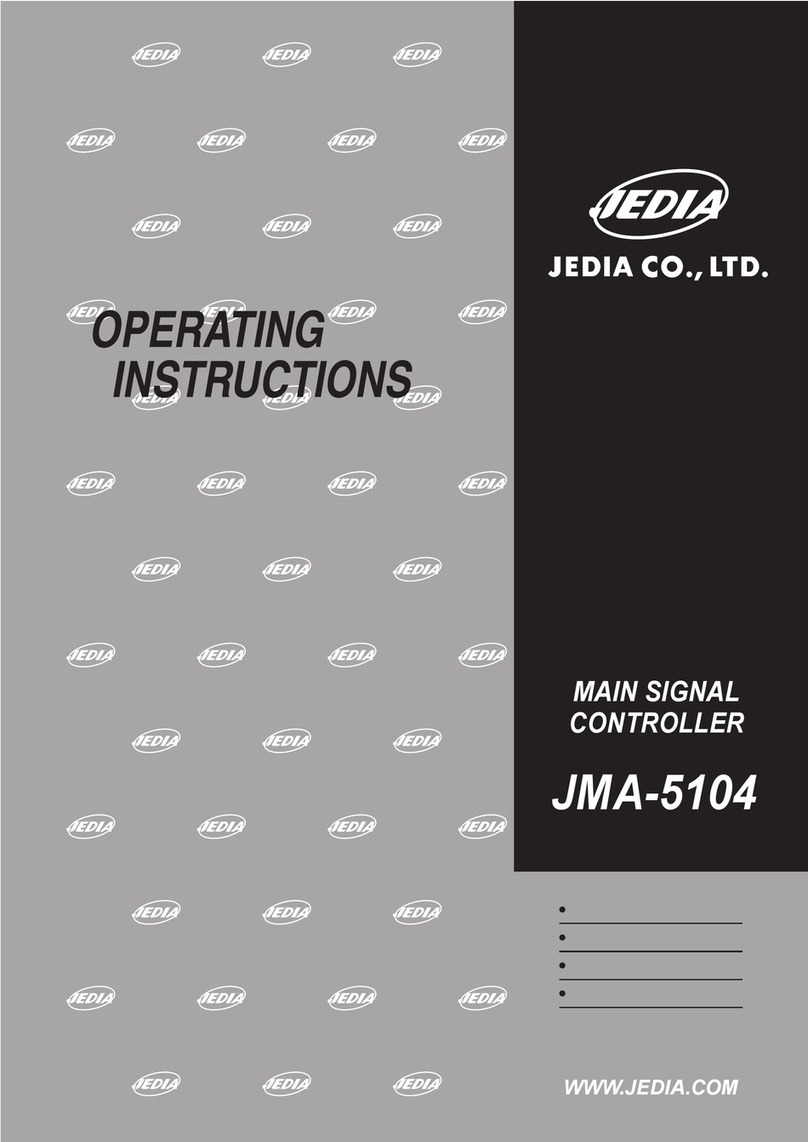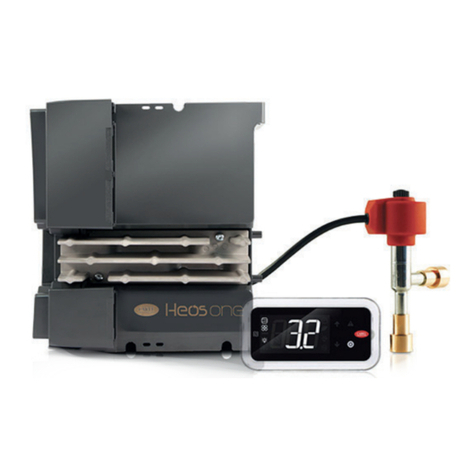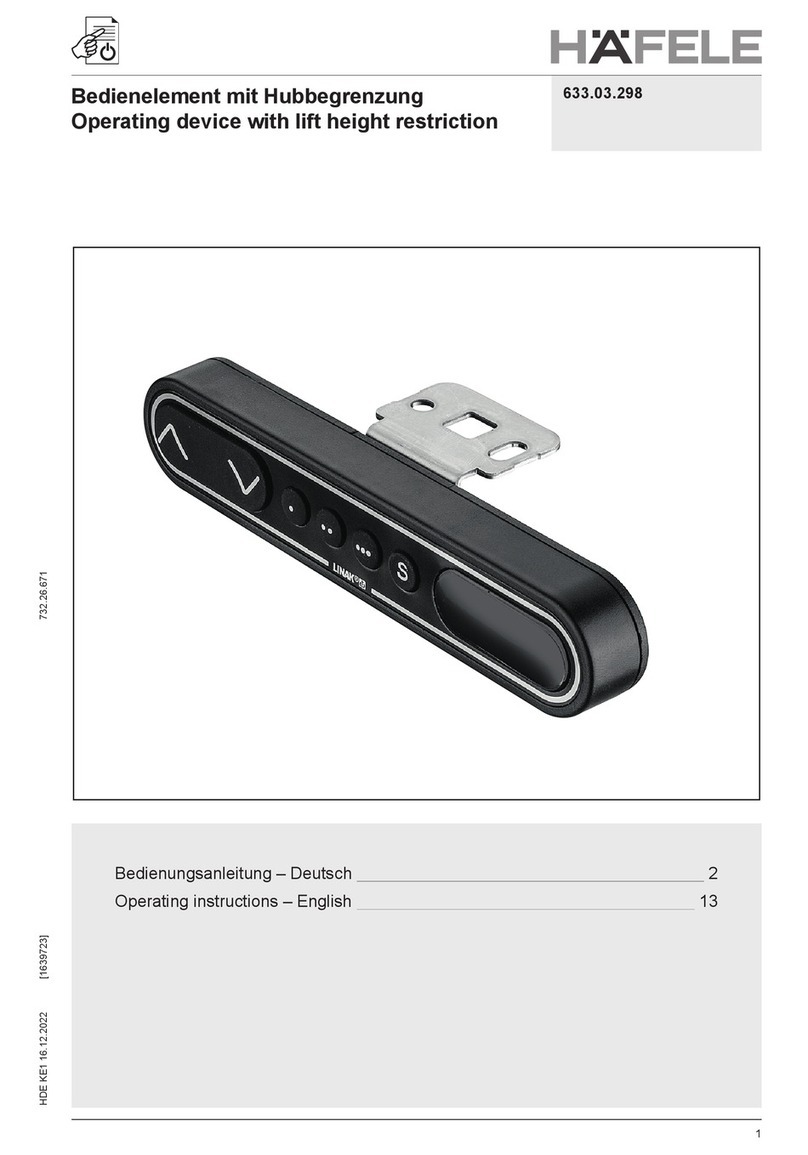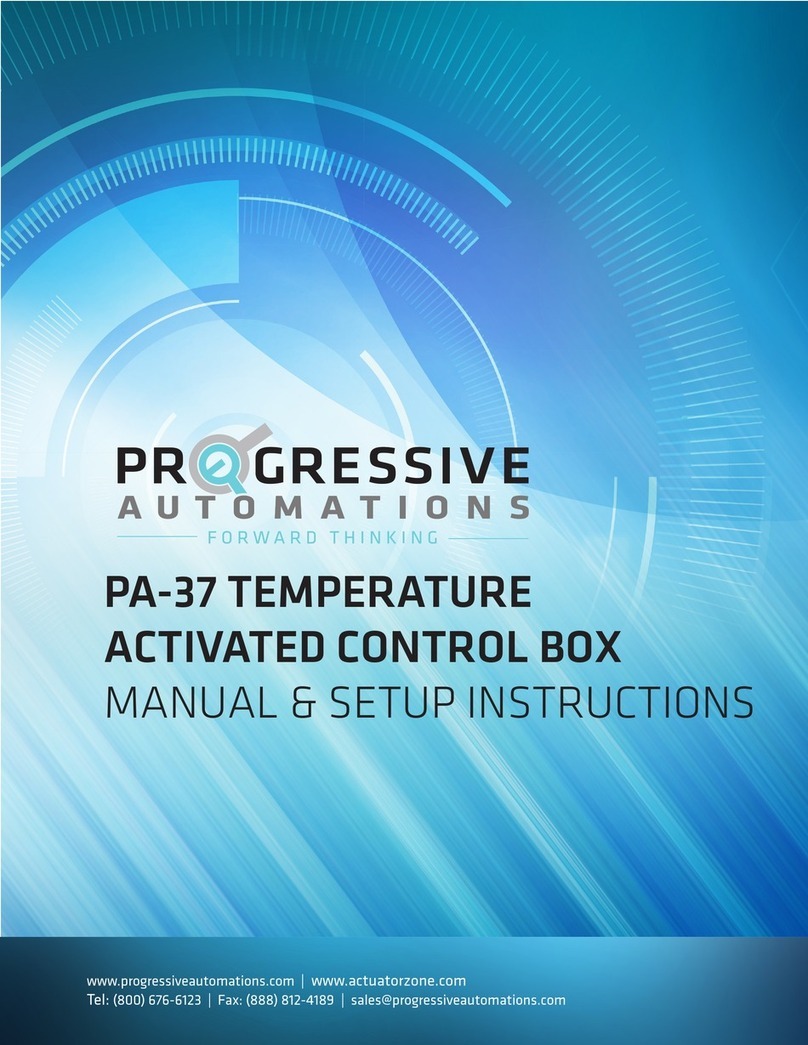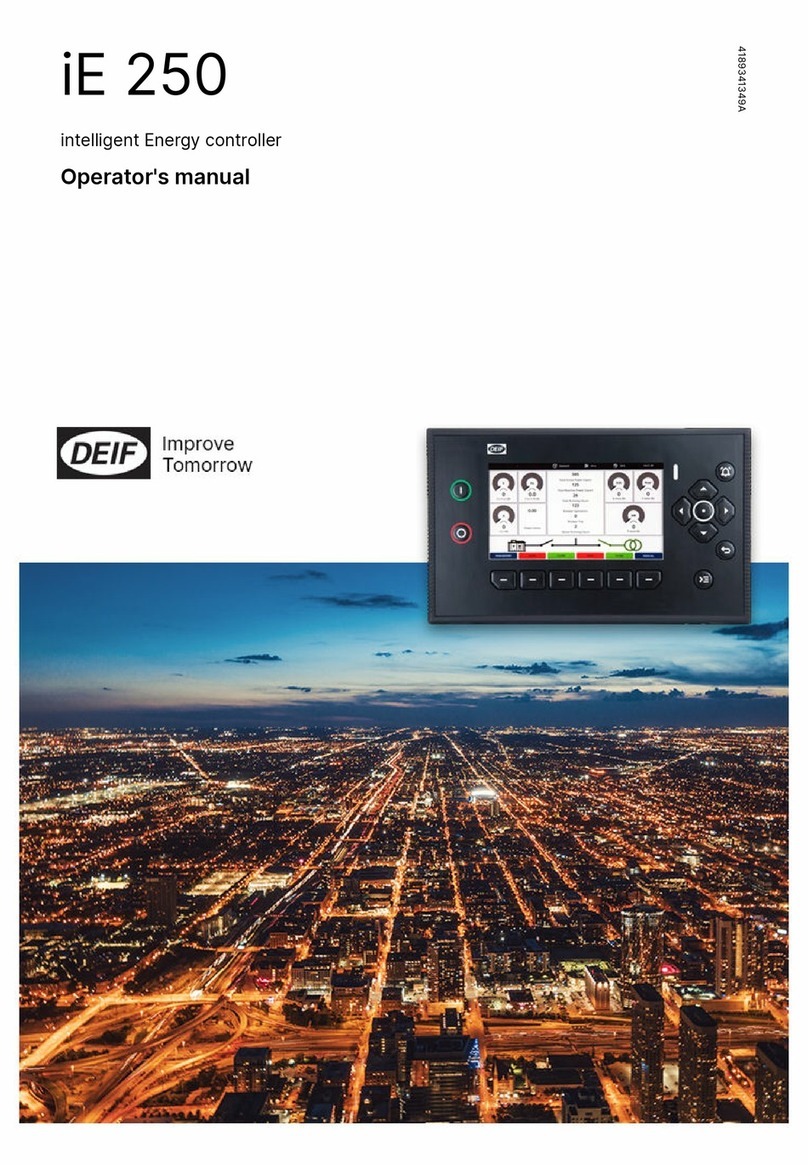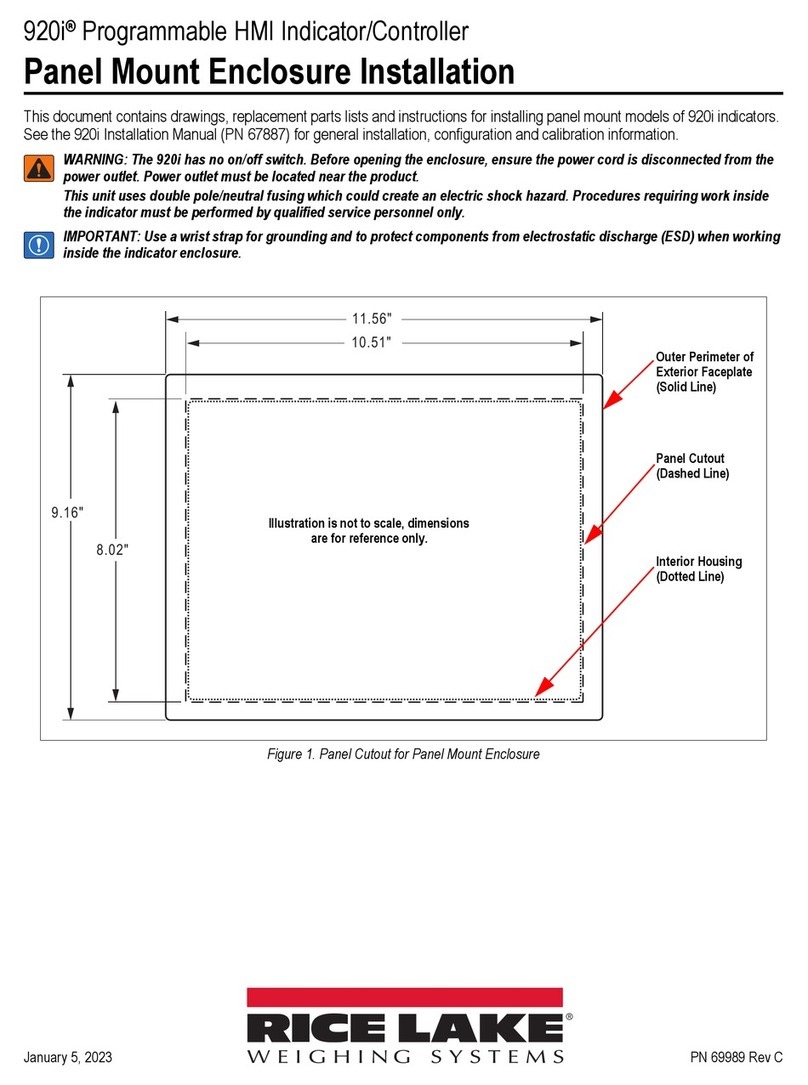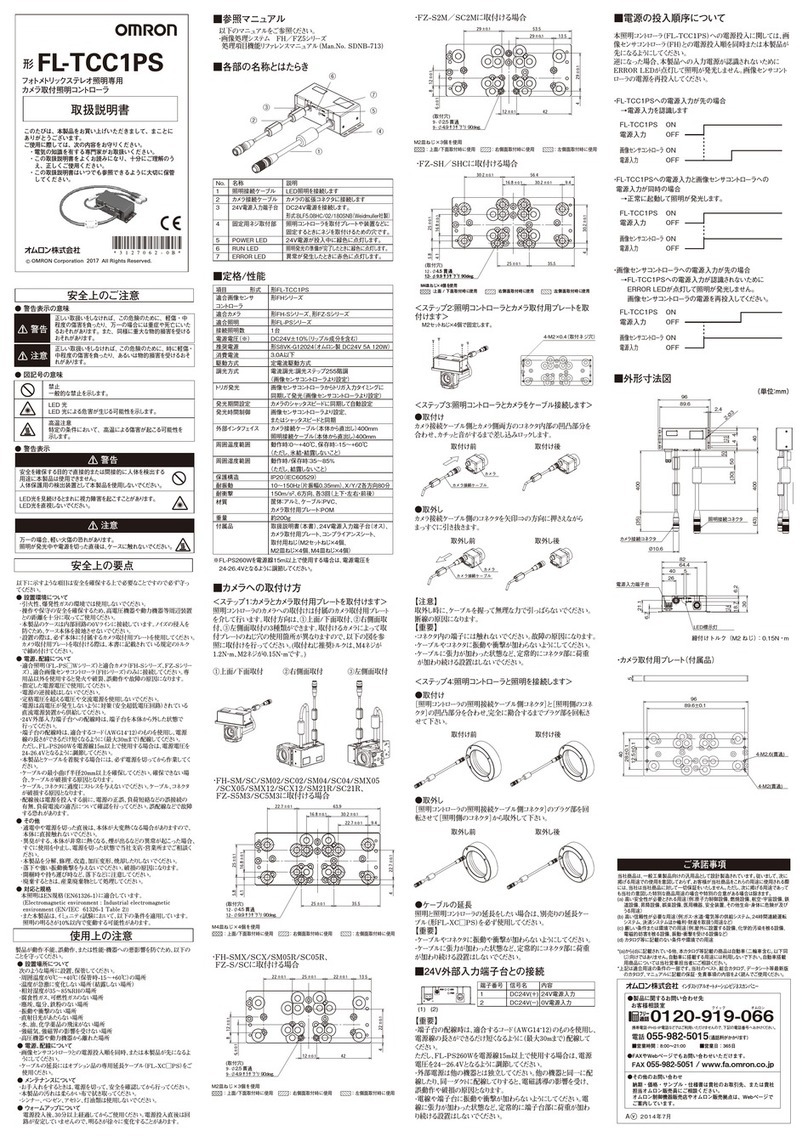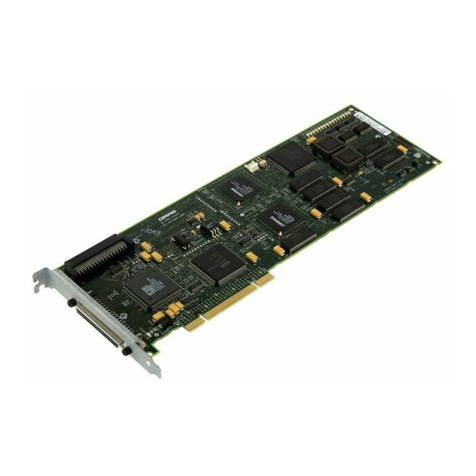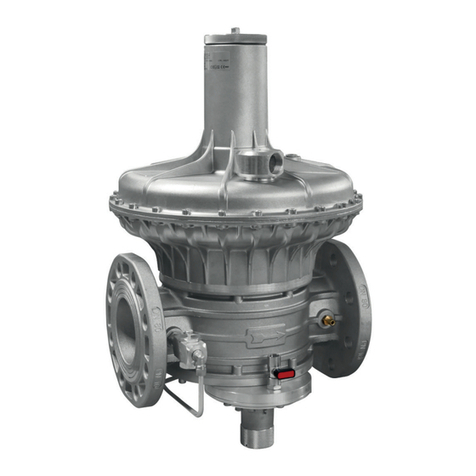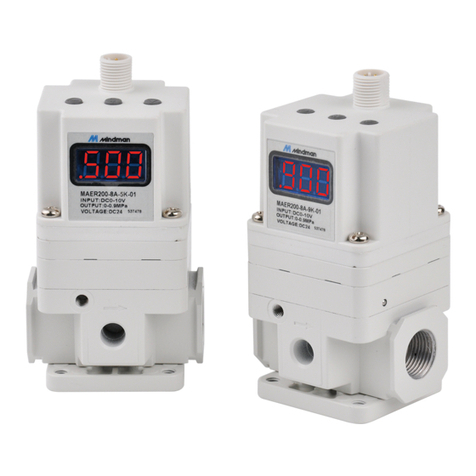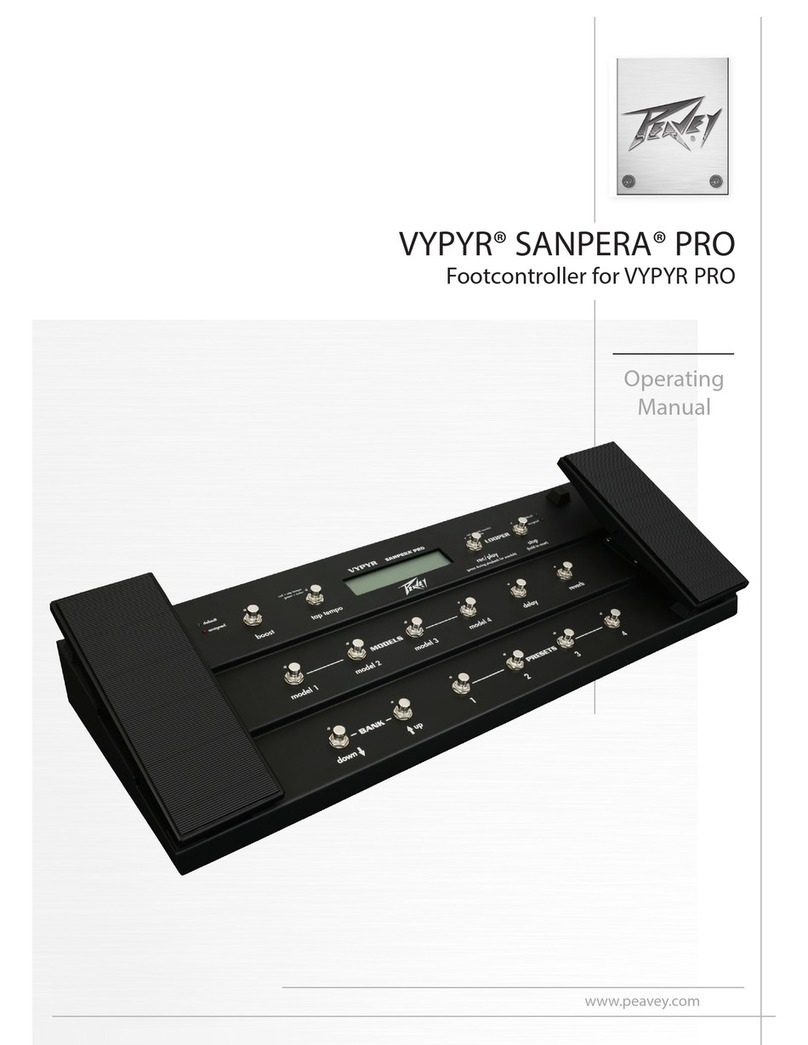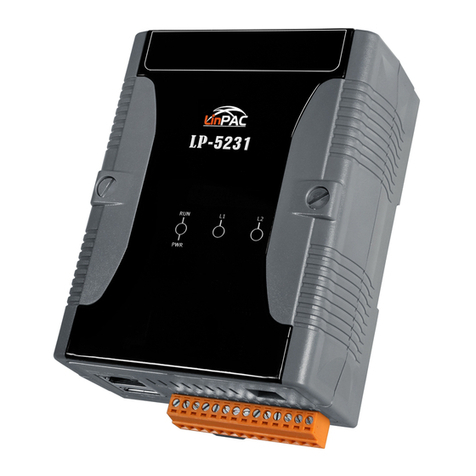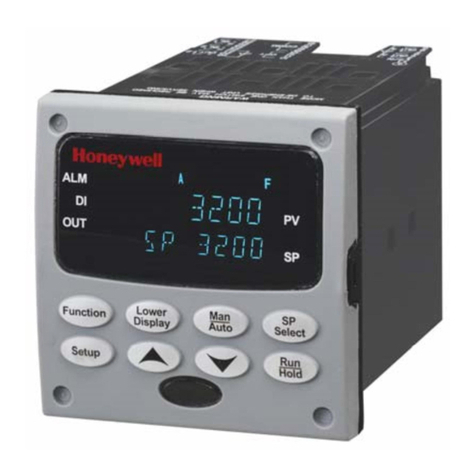Niagara JACE-3E User manual

Part Number 12762 Rev 1.1 | April 30, 2014
INSTALL GUIDE
NETWORK CONTROLLER 3E & 6E
MOUNTING AND WIRING GUIDE
14
The JACE-3E and JACE-6E controllers
are compact, embedded
controller/server platforms that allow
integrated control and management of
external devices over the Internet.
The JACE-3E uses a PowerPC 405
400Mhz processor; the JACE-6E uses a
PowerPC 440 524Mhz processor.
Each controller supports two optional
communications cards as well as
optional I/O expansion modules.
Onboard static RAM (SRAM) provides
NiagaraAX station backup capability
without any battery installed. An
optional backup battery is also
available.

TABLE OF CONTENTS
NETWORK CONTROLLER 3E & 6E MOUNTING AND WIRING GUIDE
2NETWORK CONTROLLER 3E & 6E MOUNTING AND WIRING GUIDE
© 2014 Tridium, Inc.
3951 Westerre Parkway, Suite 350
Richmond, Virginia 23233 USA
Information and/or specifications published here are current as of the date of publication of this document. Tridium, Inc.
reserves the right to change or modify specifications without prior notice. The latest product specifications can be found
by contacting our corporate headquarters, Richmond, Virginia. Products or features contained herein are covered by one
or more U.S. or foreign patents. This document may be copied by parties who are authorized to distribute Tridium prod-
ucts in connection with distribution of those products, subject to the contracts that authorize such distribution. It may not
otherwise, in whole or in part, be copied, photocopied, reproduced, translated, or reduced to any electronic medium or
machine-readable form without prior written consent from Tridium, Inc. Complete confidentiality, trademark, copyright
and patent notifications can be found at: http://www.tridium.com/galleries/SignUp/Confidentiality.pd f.
JACE, Niagara Framework, Niagara AX Framework and the Sedona Framework are trademarks of Tridium, Inc.
About This Guide ........................................... 4
Related Documentation ........................................................................................4
Preparation .................................................... 5
Included in this Package ........................................................................................5
Material and Tools Required .................................................................................5
Precautions .................................................... 6
Safety Precautions ..................................................................................................6
Static Discharge Precautions .................................................................................6
Battery Precautions ................................................................................................7
WEEE (Waste of Electrical and Electronic Equipment) ......................................7
Mounting ....................................................... 8
Environmental Requirements ................................................................................8
Physical Mounting ..................................................................................................8
Removing and Replacing the Cover ...................................................................10
Board Layout ........................................................................................................10
About Expansion Options ............................ 11
About Option Cards ............................................................................................11
About Accessory Modules ..................................................................................13
Wiring Details .............................................. 14
Grounding ............................................................................................................15
Power Wiring ........................................................................................................15
Communications Wiring ......................................................................................18
RS-485 Biasing ......................................................................................................20
Power Up and Initial Checkout .................... 23
Apply Power .........................................................................................................23
Check the Status LED ..........................................................................................23
About Backup Configurations ...................... 23
SRAM .....................................................................................................................24
NiMH battery pack ...............................................................................................24

Part Number 12762 Rev 1.1 | April 30, 2014
|NETWORK CONTROLLER 3E & 6E MOUNTING AND WIRING GUIDE 3
Status LEDs .................................................. 25
Ethernet Ports .......................................................................................................25
Heartbeat ..............................................................................................................25
Status .....................................................................................................................25
Serial Ports ............................................................................................................25
Maintaining the Controller .......................... 26
Cleaning ................................................................................................................26
NiMH Battery Installation and Maintenance ......................................................26
Replacement Parts ....................................... 28
Non-replaceable Parts .........................................................................................29
Standard Replacement Parts ...............................................................................29
New Replacement Unit ........................................................................................29
Replacing the Controller Base Assembly ...........................................................29
Returning a Defective Unit ..................................................................................31
Certifications ............................................... 31
Tab Mounting Dimensions ........................... 32

Part Number 12762 Rev 1.1 |April 30, 2014 ABOUT THIS GUIDE
Related Documentation
4NETWORK CONTROLLER 3E & 6E MOUNTING AND WIRING GUIDE |
About This Guide
This document covers the mounting and wiring of the Tridium® JACE-3E (T-300E)
and JACE-6E (T-600E) controllers. It assumes that you are an engineer, technician,
or service person who is performing control system installation. Instructions in this
document apply to the following products:
Note Not covered in this document is the NiagaraAX software installation and
configuration required for a fully functioning unit. Refer to the JACE
Niagara AX Install and Startup Guide for this information.
In addition, the mounting and wiring of JACE expansion options are
covered in separate documents. See “Related Documentation”, and also the
section “About Expansion Options,” page 11.
Related Documentation
For more information on configuring and using the JACE-3E or JACE-6E controller,
refer to the following documents:
• JACE NiagaraAX Install and Startup Guide
• JACE Data Recovery Service (SRAM Support) - Engineering Notes
• T-IO-16 Installation and Configuration Guide
• T-IO-34 Installation and Configuration Guide
• Various option card installation documents, such as:
•NiagaraAXNdioGuide
•NiagaraAXUserGuide
Model Description
T-300E DIN mount JACE-3E controller, using PowerPC 405 400Mhz processor, 256MB
DDR2 RAM, 128MB Serial Flash, 512MB Static RAM (SRAM).
Powered by one of the two separate plug-in power supply modules, or by wall
mount AC power adapter. Controller supports optional I/O expansion modules
and internal communications option cards.
NOTE:
NiagaraAX-3.7.105 or later is required for a JACE-3E (T-300E).
T-600E,
T-600E-USA
DIN mount JACE-6E controller, using PowerPC 440 524Mhz processor, 256MB
DDR RAM, 128MB Serial Flash, 512MB Static RAM (SRAM).
Powered by one of the two separate plug-in power supply modules, or by wall
mount AC power adapter. Controller supports optional I/O expansion modules
and internal communications option cards.
NOTE:
NiagaraAX-3.6.47 or later is required for a JACE-6E (T-600E).
NPB-PWR 24Vac/dc input/15Vdc output power supply module, DIN mountable.
NPB-PWR-UN 120–240Vac universal input/15Vdc output power supply module, DIN mountable.
WPM-
XXX
Wall-mount, Class 2 universal AC power adapter, with different models available,
where -
XXX
is either: -US, -EUR, or -UK (vary by AC wall plug).
• NPB-LON Option Install Sheet • NPB-2X-485 Option Install Sheet
• NPB-232 Option Install Sheet • NPB-GPRS Modem Install Sheet
• NPB-ZWAVE Option Install Sheet • NPB-SED-001 Option Card Install Sheet

PREPARATION Part Number 12762 Rev 1.1 | April 30, 2014
Included in this Package
|NETWORK CONTROLLER 3E & 6E MOUNTING AND WIRING GUIDE 5
Preparation
Unpack the controller and inspect the package contents for damaged or missing
components. If damaged, notify the appropriate carrier at once and return any
damaged components for immediate repair or replacement. See “Returning a
Defective Unit” on page 31.
•Included in this Package
•Material and Tools Required
Included in this Package
Included in this package you should find the following items:
• A JACE-3E or JACE-6E controller.
•This
Network Controller 3E & 6E Mounting and Wiring Guide
,
Part Number 12762 Rev 1.1.
• a hardware bag containing the following items:
— One (1) grounding wire, with quick-disconnect 0.187" female connector.
Material and Tools Required
The following supplies and tools are typically required for installation:
• A suitable power module, as one of the following types:
— NPB-PWR: 24Vac or 24Vdc, in-line, DIN mount capable, with grounding wire.
— NPB-PWR-UN: 120–240Vac, in-line, DIN mount capable, with grounding wire
—WPM-XXX: External wall-mount power adapter (input 90–254Vac, 50–60 Hz,
output: 15Vdc, 1A), where XXX varies by AC wall plug, for installation locale,
as: WPM-US (U.S. or Japan installations), WPM-EUR (European installations,
type “C” plug), or WPM-UK (United Kingdom installations, type “B” plug).
Note Using an NPB-PWR power module provides the widest operating
temperature range. See “Environmental Requirements,” page 8.
• If using a NPB-PWR (24V) power module, either one of the following:
— UL listed, Class 2, 24Vac transformer, rated at minimum of 7.5VA to 20VA
(approximate range of controller alone, to fully-expanded unit with four addi-
tional T-IO-16 modules and other option boards). Note that a dedicated trans-
former is required (cannot also power additional equipment).
— 24Vdc power supply, capable of supplying at least 1A (24W).
• DIN rail, type NS35/7.5 (35mm x 7.5mm) and DIN rail end-clips (stop clips), rec-
ommended for any installation that includes NPB-PWR or NPB-PWR-UN power
module and/or optional I/O modules.
• Suitable tools and fasteners for mounting unit and accessories.
• #2 phillips screwdriver: used to install and remove any option card.
• Small flat-blade screwdriver: used for making wiring connections to removable
screw terminal plugs, also for mounting and removing modules from DIN rail.

Part Number 12762 Rev 1.1 |April 30, 2014 PRECAUTIONS
Safety Precautions
6NETWORK CONTROLLER 3E & 6E MOUNTING AND WIRING GUIDE |
Precautions
This document uses the following warning and caution conventions:
Caution
Cautions remind the reader to be careful. They alert readers to situations
where there is a chance that the reader might perform an action that cannot
be undone, might receive unexpected results, or might lose data. Cautions
contain an explanation of why the action is potentially problematic.
Warning Warnings alert the reader to proceed with extreme care in situations
where there is a chance that the reader might do something that can
result in personal injury or equipment damage. Warnings contain an
explanation of why the action is potentially dangerous.
Safety Precautions
The following are warnings relating to the installation and start-up of the controller.
Be sure to heed these warnings to prevent personal injury or equipment damage.
Warning • Depending on power module used, the circuit powering the con-
troller is 120–240Vac at 50/60 Hz (if a NPB-PWR-UN), 24Vac at
50/60 Hz or 24Vdc (if a NPB-PWR), or from 100–240Vac at 50/60
Hz (if a WPM-XXX). Disconnect power before installation or servic-
ing to prevent electrical shock or equipment damage.
• Make all connections in accordance with national and local electri-
cal codes. Use copper conductors only.
• To reduce the risk of fire or electrical shock, install in a controlled
environment relatively free of contaminants.
• This device is only intended for use as a monitoring and control
device. To prevent data loss or equipment damage, do not use it for
any other purpose.
Static Discharge Precautions
Static charges produce voltages high enough to damage electronic components. The
controller’s microprocessors and associated circuitry are sensitive to static discharge.
Follow these precautions when installing, servicing, or operating the system:
Caution • Work in a static-free area.
• Discharge any static electricity you may have accumulated. Discharge
static electricity by touching a known, securely grounded object.
• Do not handle printed circuit boards (PCBs) without proper protection
against static discharge. Use a wrist strap when handling PCBs. The
wrist strap clamp must be secured to earth ground.

PRECAUTIONS Part Number 12762 Rev 1.1 | April 30, 2014
Battery Precautions
|NETWORK CONTROLLER 3E & 6E MOUNTING AND WIRING GUIDE 7
Battery Precautions
Caution • The optional NiMH battery used in this device may present a risk of fire
or chemical burn if mistreated. Do not disassemble, heat above 122ºF
(50ºC), or incinerate. Replace battery pack with type NPB-BATTonly.
Use of another battery may present a risk of fire or explosion.
• Dispose of used battery promptly. Keep away from children. Do not dis-
assemble and do not dispose of in fire.
• Replace external backup battery with Listed Power Source Battery Only.
WEEE (Waste of Electrical and Electronic Equipment)
Recycling of Electronic Products: (International Installations)
In 2006 the European Union adopted regulations (WEEE) for the collection and
recycling of all waste electrical and electronic equipment. It is no longer allowable to
simply throw away such equipment. Instead, these products must enter the recycling
process. To properly dispose of this product, please take it to a local recycling center.
If a local recycling center cannot be found, please return it to one of these offices:
Tridium Europe Ltd
1, The Grainstore
Brooks Green Road
Coolham, West Sussex
RH13 8GR United Kingdom
Tridium Asia Pacific Pte Ltd
17 Changi Business Park Central 1
Honeywell Building
Singapore 486073
Tridium, Inc.
2256 Dabney Road, Suite C
Richmond, VA 23230

Part Number 12762 Rev 1.1 |April 30, 2014 MOUNTING
Environmental Requirements
8NETWORK CONTROLLER 3E & 6E MOUNTING AND WIRING GUIDE |
Mounting
Before mounting the controller, install any option card(s). See “About Option Cards,”
page 11. Also see “RS-485 Biasing,” page 20. Then mount the controller in a location
that allows clearance for wiring, servicing, and module removal.
Note
This product is for
indoor use
only, altitude to 2,000m (6,562 ft.) maximum.
Depending on installed options, the allowable temperature range varies.
See “Environmental Requirements” below.
Avoid mounting the controller in a manner that would make it difficult to
operate the disconnect device. See “Physical Mounting” for more details.
Environmental Requirements
• Do not expose the unit to ambient operating temperatures outside the range:
0°C (32°F) to 60°C (140°F), providing the unit:
—Isnot powered by the AC line input NPB-PWR-UN module1, and
— The optional NiMH battery pack is not installed.
Otherwise, 0°C (32°F) to 50 (122°F) is the ambient operating temperature range.
• Relative humidity range is 5% to 95% non-condensing.
• Pollution Degree III.
• Supply (mains) voltage requirements are as follows:
— Allowable voltage fluctuation to -15%, +10%, Temporary overvoltages +/- 15%.
— Transient overvoltages: Overvoltage Category II.
• If mounting inside an enclosure, that enclosure should be designed to keep the
unit within its required operating range considering a 20-watt dissipation by the
controller, plus dissipation from any other devices installed in the same enclosure.
This is especially important if the controller is mounted inside an enclosure with
other heat producing equipment.
• Do not mount the unit:
— in an area with excessive moisture, corrosive fumes, or explosive vapors.
— where vibration or shock is likely to occur.
— in a location subject to electrical noise. This includes the proximity of large
electrical contactors, electrical machinery, welding equipment, spark igniters,
and variable frequency drives.
Physical Mounting
The following information applies about physically mounting the unit.
• You can mount the controller in any orientation. It it not necessary to remove the
cover before mounting.
1. Powering the controller with the wall mount adapter (WPM-XXX) at 60°C (140°F) is supported, how-
ever, at 60°C its output is derated 50%, i.e. 15V at 0.5A (7.5W). No IO modules are supported.

MOUNTING Part Number 12762 Rev 1.1 | April 30, 2014
Physical Mounting
|NETWORK CONTROLLER 3E & 6E MOUNTING AND WIRING GUIDE 9
• Mounting on a 35mm wide DIN rail is recommended. The controller’s unit base
has a molded DIN rail slot and locking clip, as do the power supply modules and
both types of I/O expansion modules. Mounting on a DIN rail ensures accurate
alignment of connectors between all modules.
• If DIN rail mounting is impractical, you can use screws in mounting tabs on the
controller, as well as any end-connected accessory (NPB-PWR, etc.). Tab mount-
ing dimensions are on the last page of this document.
Figure 1 and the following procedure provides step-by-step DIN rail mounting
instructions for the controller.
Figure 1 T-300E or T-600E controller and accessory mounting details.
Procedure 1 To mount on DIN rail
Step 1 Securely install the DIN rail with at least two screws, near the two rail ends.
Mounting on DIN Rail Removing from DIN Rail
Controller
7.13” (181)
6.38” (162)
10.35” (263)
13.58” (345)
16.81” (427)
20.04” (509)
23.27” (591)
4.1” (104 )
2.05” (52)
Install DIN rail End Clip
(Stop Clip) at both ends
of final assembly.
NPB-PWR or
NPB-PWR-UN
Up to four (4)
T-IO-16 modules
are supported.
DIN rail
End Clip
DIN rail
End Clip
Controller
Controller
T-IO-16
NPB-PWR or
NPB-PWR-UN
NOTE: If installing
IO modules and
using the
NPB-PWR or
NPB-PWR-UN
power supply
module, the power
supply module
installs at the end
of the chain.
T-IO-16

Part Number 12762 Rev 1.1 |April 30, 2014 MOUNTING
Removing and Replacing the Cover
10 NETWORK CONTROLLER 3E & 6E MOUNTING AND WIRING GUIDE |
Step 2 Position the controller on the rail, tilting to hook DIN rail tabs over one
edge of the DIN rail (Figure 1).
Step 3 Use a screwdriver to pry down the plastic locking clip, and push down and
in on the unit, forcing the locking clip to snap over the other DIN rail edge.
Step 4 Mount any accessory module (I/O module, NPB-PWR) onto the DIN rail in
the same manner.
Step 5 Slide the accessory module along the DIN rail to connect its 20-position
plug into the controller.
Step 6 Repeat this for all accessories, until all are mounted on the DIN rail and
firmly connected to each other.
Step 7 To keep the final assembly together, secure at both ends with DIN rail
end-clips provided by the DIN rail vendor. This also prevents the assembly
from sliding on the DIN rail. See Figure 1.
Removing and Replacing the Cover
You must remove the controller’s cover to install any option cards, or to install (or
replace) the optional NiMH backup battery. The cover snaps onto the base with four
plastic end tabs—two on each end.
Figure 2 Press in four tabs on ends of cover to remove.
Note If accessory modules are plugged into the controller, you may need to slide
them away from the unit to get to the end cover tabs.
• To remove the cover, press in the tabs on both ends of the unit, and carefully lift it off.
• To replace the cover, orient it so the cutout area for comm ports is correct, then
push inwards to snap in place.
Board Layout
Figure 3 shows the location of LEDs, option slots, and other features of the T-300E
or T-600E controller with cover removed. For a side view of communications ports
and other features, see Figure 6 on page 18.
Cover
Press
Tabs In
Cover Tabs
(2 each end) Cover
lifted
away

ABOUT EXPANSION OPTIONS Part Number 12762 Rev 1.1 | April 30, 2014
About Option Cards
|NETWORK CONTROLLER 3E & 6E MOUNTING AND WIRING GUIDE 11
Figure 3 T-300E or T-600E controller main board layout details.
The controller ships with onboard static RAM (SRAM) that can provide station
backup during power loss, and also has two (2) open option card slots for a variety of
available option cards. For details, see “About Expansion Options” below, and also
“About Backup Configurations,” page 23.
About Expansion Options
The controller provides for field-installable expansion using these types of options:
•Option cards — Install on connectors on the controller’s base board. See “A b o u t
Option Cards,” page 11.
•Accessory modules — To “chain” on the controller’s 20-pin connector. See
“About Accessory Modules,” page 13.
About Option Cards
The controller has two (2) available option slots for option cards designed for use
with JACE controllers. Each slot has a 30-pin connector. Installing an option card is
recommended before mounting the unit. See “Installing an Option Card,” page 12.
Warning Power to the controller must be OFF when installing or removing
option cards, or damage will occur! Also, you must be very careful to
plug an option card into its connector properly (pins aligned).
Option cards typically provide additional communications features, with the
following available models (with others still in development) listed in Table 1.
Earth ground
spade lug
Normal
Serial Shell
Option Slot 2
COM 1 COM 2
Serial port LEDs on bottom
board, remove cover to see: LAN2 LAN1 BEAT STATUS
Status LEDs (visible with cover on):
Bracket for
optional
NiMH
Backup
Battery
Option Slot
Connectors
Option Slot 1
20-Pin
Connector
(I/O and
Power
Modules)
Mode Jumper
(for serial shell
access)
Secondary
Ethernet (RJ-45)
LAN2 (top board)
RS-232
(DB-9)
COM1
(bottom
board)
Barrel power
connector for
wall mounted
power module
(WPM-XXX).
Primary
Ethernet
(RJ-45)
LAN1 (top
board)
RS-485
(3-pos.)
COM2
(bottom
board)
(SEC) (PRI)
NPM3E or NPM6E
processor module
with integral SRAM

Part Number 12762 Rev 1.1 |April 30, 2014 ABOUT EXPANSION OPTIONS
About Option Cards
12 NETWORK CONTROLLER 3E & 6E MOUNTING AND WIRING GUIDE |
Installing an Option Card
For option-specific details, see the mounting & wiring document that accompanies
the particular option card. The following procedure provides a basic set of steps.
Procedure 2 Mounting an option card in a T-300E or T-600E controller.
Step 1 If a station is running, stop it using the platform Application Director view.
Step 2 Remove power from the controller—see the previous Warning.
Step 3 Remove the cover. See “Removing and Replacing the Cover,” page 10.
Step 4 If the optional NiMH battery/bracket assembly is installed, remove it by
taking out the four screws holding it place, setting them aside for later. Two
of these screws will also secure the option card, once installed.
a Unplug the battery from the connector on the controller’s base board.
b Remove the blanking plate from the option slot to be used.
Step 5 If no optional NiMH battery/bracket assembly is installed, remove the
blanking plate for the option slot to be used, retaining the two screws.
Table 1 JACE-3E and JACE-6E Controller Option Cards.
Option Description Notes
NPB-2X-485 Dual, optically-isolated, RS-485
adapter with two 3-position remov-
able screw-terminal connector plugs.
If installed in Option slot 1, ports operate
as COM3 and COM4. If two 485 option
cards, ports are COM3, COM4 for Option
slot 1, and COM5, COM6 for Option slot 2.
NPB-LON FTT-10A LON (LonWorks) adapter
with a 2-position removable
screw-terminal connector plug.
Port operates as LON1 if only one LON
option, or LON2 in slot 2 if two LON cards.
NPB-232 Single port RS-232 adapter, with a
DB-9M connector. Supports baud
rates up to 115200.
If installed in option slot 1, port operates as
COM3. If two 232 option cards, ports are
COM3 for Option slot 1 and COM4 for
Option slot 2.
NPB-GPRS-W
NPB-GPRS
GSM cellular modem card using
GPRS (General Packet Radio Ser-
vice), with onboard socket for SIM
card, and a Wyless SIM.
Includes SMA coax tilt-and-swivel antenna.
The NPB-GPRS-W model is bundled with a
Wyless-provisioned SIM card. The
NPB-GPRS model does not include a SIM
card.
NPB-ZWAVE
-US
or
-EU
Z-Wave wireless serial gateway
between the JACE’s NiagaraAX sta-
tion and an RF wireless Z-Wave
domain. Includes RP-SMA coax
tilt-and-swivel antenna.
-US model is 908.42 MHz for U.S. usage
-EU model is 868.42 MHz for European
usage. If installed in option slot 1, card
operates as COM3.
NPB-SED-001 Sedona Framework option card with
both wireless 6LoWPAN and wired
RS-485 port, based on the Jennic
JN5139 wireless microcontroller.
Includes stub antenna.
Enables JACE to operate as wireless net-
work coordinator and 6LoWPAN tunnel, to
integrate wireless Sedona-based devices in
the hosted station. Card uses one COM
port, e.g. COM3 if slot 1.
NOTE: COM port used is not available in
the hosted NiagaraAX station, but is
reserved for future MS/TP support.

ABOUT EXPANSION OPTIONS Part Number 12762 Rev 1.1 | April 30, 2014
About Accessory Modules
|NETWORK CONTROLLER 3E & 6E MOUNTING AND WIRING GUIDE 13
Note If you are also installing the optional NiMH battery/bracket assembly now,
remove and retain the other two screws, that is for the other option slot.
Step 6 Carefully insert the pins of the option card into the socket headers of the
option card slot.
The mounting holes on the option board should line up with the standoffs
on the base board. If they do not, the connector is not properly aligned.
Press until the option card is completely seated.
Step 7 Place the custom end plate for the option card over the connector(s) of the
option card. With some option cards, the card’s end plate is pre-fastened.
Step 8 If installing (or replacing) the optional NiMH battery/bracket assembly:
a Plug the battery connector plug into the battery connector on the control-
ler’s base board.
b Set the battery and bracket assembly over the option card slots, with the
mounting holes aligned with the standoffs.
c Place the four screws through the bracket, end plates, and into the standoffs
on the controller base board. With a screwdriver, hand tighten the screws.
For more details, see
“NiMH Battery Installation and Maintenance,”
page 26.
Otherwise, place the two screws through the option card end plate and into
the standoffs on the base board.
With a screwdriver, hand tighten the screws.
Step 9 Replace the cover on the controller.
Step 10 Restore power to the controller and verify normal operation.
About Accessory Modules
The controller has a 20-pin, right-angle, Euro-DIN connector that accepts
custom-built accessory modules. The connector provides power and signal lines to
any connected modules.
Warning • Power to the controller must be OFF when inserting or unplugging
accessory modules. Wait for all LED activity to stop (all LEDs off).
• Also, do not connect live voltages to the inputs or outputs of an I/O
module while it is in an “un-powered state” before plugging the
module into the controller.
Otherwise,
damage to the I/O module and/or controller may result
!
Each accessory module has a DIN-mount base, and typically provides two (2) 20-pin
connectors that allow you to “chain” multiple accessories. Tab le 2 lists the currently
available modules.

Part Number 12762 Rev 1.1 |April 30, 2014 WIRING DETAILS
About Accessory Modules
14 NETWORK CONTROLLER 3E & 6E MOUNTING AND WIRING GUIDE |
Wiring Details
See Figure 3 on page 11 to locate connectors and components on the controller.
Make connections to the controller in the following order.
1Install any option card (LON, RS-485, RS-232, etc.) in the available option slots.
See “Installing an Option Card,” page 12 for a procedure. For complete details,
refer to the document that shipped with the option card.
If installing the optional NiMH battery, do that after inserting option card(s). See
“NiMH Battery Installation and Maintenance,” page 26.
2Connect supplied grounding wire from the earth ground lug on the controller, as
well ground wire for each accessory module, to a nearby earth grounding point.
See “Grounding,” page 15.
3Prepare power wiring (leave unit powered off ). See “Power Wiring,” page 15.
4Connect communications cables. See “Communications Wiring,” page 18 for
ports on the controller. For ports on any installed option card (485-PWR, LON,
RS-485, modem) see the option’s specific mounting and wiring guide for details.
5If I/O accessory modules are installed, connect I/O wiring. Refer to the appropri-
ate mounting and wiring guide for details.
6Apply power to the unit. See “Power Up and Initial Checkout,” page 23.
Table 2 Accessory modules
a
compatible with the T-300E and T-600E controller.
a. A wall mount AC adapter (WPM-XXX) is also available; however, it is not an accessory module that
mounts on the 20-pin connector of the controller.
Model Description Notes
NPB-PWR DIN-mountable, 24V isolated
power module, used to power
the controller from a dedicated,
external, Class-2, 24Vac trans-
former or a 24Vdc power supply.
Only one NPB-PWR per controller.
• Do not install if using WPM-
XXX
or
NPB-PWR-UN.
• For wiring, see “NPB-PWR,” page 15.
NPB-PWR-UN DIN-mountable, Universal
120–240Vac input, 15Vdc output,
30W power supply to power the
controller.
Only one NPB-PWR-UN per controller.
• Do not install if using WPM-
XXX
or
NPB-PWR.
• For wiring, see “NPB-PWR-UN,” page 16.
T-IO-16 DIN-mountable, 16 points I/O
module, used to provide I/O
points as noted.
Up to four (maximum) T-IO-16 modules are
supported. Each provides these I/O points:
• 8 - Universal Inputs (UIs).
• 4 - Digital Outputs (DOs), SPST-relay type.
• 4 - Analog Outputs (AOs), 0–10Vdc type.
Wiring is covered in the
T-IO-16 Installation
and Configuration Guide
.
T-IO-34 DIN-mountable, combined 34
points I/O with 24V isolated
power module, used to provide
I/O points as well as power the
controller from a dedicated,
external, Class-2, 24Vac trans-
former or a 24Vdc power supply.
Only one T-IO-34 module per controller.
This module provides these I/O points:
• 16 - Universal Inputs (UIs).
• 10 - Digital Outputs (DOs), SPST-relay type.
• 8 - Analog Outputs (AOs), 0–10Vdc type.
Wiring is covered in the
T-IO-34 Installation
and Configuration Guide
.

WIRING DETAILS Part Number 12762 Rev 1.1 | April 30, 2014
Grounding
|NETWORK CONTROLLER 3E & 6E MOUNTING AND WIRING GUIDE 15
Grounding
An earth ground spade lug (0.187") is provided on the controller base for connection
to earth ground. For maximum protection from electrostatic discharge or other
forms of EMI, connect the supplied earth grounding wire to this lug and a nearby
earth ground. Keep this wire as short as possible, see Figure 4 on page 16.
Wire the earth ground spade lug of accessory modules in the same manner.
Power Wiring
The controller must be powered by an approved 15 Vdc power source. This can be
either1DIN-mountable module: the NPB-PWR, a 24Vac/dc-powered module, or the
NPB-PWR-UN, a line-powered 120–240Vac module. Or, an external Class 2 wall
mount AC adapter (WPM-XXX) can be used for controller power.
Note
See
“Environmental Requirements”
on page 8 for mains supply requirements.
The controller does not include an on/off switch. To apply power, you either:
• if NPB-PWR, plug in its 2-position power connector.
• if NPB-PWR-UN, energize the AC circuit (120–240 Vac) wired to that module.
•ifWPM-XXX, plug in the power connector to the controller.
Caution Do not connect both the WPM-XXX and NPB-PWR / NPB-PWR-UN
supplies at the same time, or equipment damage may result.
Power consumption depends mainly on installed I/O modules, and may vary from:
• Controller alone (with or without installed option cards): approximately 7.5 VA
(AC) or 7.5 W (DC).
• Controller (with or without installed option cards), plus four (4) T-IO-16 mod-
ules: up to 20 VA (AC) or 20 W (DC).
If desired, you can use the wall mount WPM-XXX in your office (to initially
commission the controller), and then install the controller at the job using either a
NPB-PWR or NPB-PWR-UN module. The following sections provide more details:
•“NPB-PWR,” page 15 (24Vac/dc-powered in-line module)
•“NPB-PWR-UN,” page 16 (Universal 120V–240Vac-powered in-line module)
•“WPM-XXX (Wall Mount AC Adapter),” page 17
NPB-PWR
Use the NPB-PWR module to power the controller (and if installed, T-IO-16 modules)
from a dedicated Class 2, 24Vac transformer, or from a 24Vdc power supply.
Note If there is no optional NiMH backup battery, using the NPB-PWR allows a
higher operating temperature. See “Environmental Requirements,” page 8.
1. A fourth power option is available: a T-IO-34 accessory module, which is a combination of the
NPB-PWR module and two T-IO-16 modules (plus two extra relays). Refer to its mounting and wir-
ing document for more details. For a listing of modules, see “About Accessory Modules,” page 13.

Part Number 12762 Rev 1.1 |April 30, 2014 WIRING DETAILS
Power Wiring
16 NETWORK CONTROLLER 3E & 6E MOUNTING AND WIRING GUIDE |
Note If powering from a 24V transformer, do not power any other equipment
with it. Otherwise, conducted noise problems may result. Also, do not
ground either side of the transformer’s 24V secondary.
Figure 4 NPB-PWR module wiring connections.
Located at the bottom of the NPB-PWR module is a 2-position power connector,
and an earth ground spade lug, as shown in Figure 4.
Connect the supplied earth ground wire to a nearby earth ground point. Unplug the
power connector plug from the module and make connections to it as shown.
Caution Do not plug 24V power into the NPB-PWR (reinsert connector plug) until
all other mounting and wiring is completed. See “Power Up and Initial
Checkout,” page 23.
NPB-PWR-UN
The NPB-PWR-UN module lets you power the controller (and if installed,
connected I/O modules) from AC line power, with a universal input range from
120–240Vac. If installing T-IO-16 modules, the NPB-PWR-UN module mounts as
the last (end) module in the chain. (see Figure 1 on page 9).
Warning • A 120Vac or 240Vac circuit powers the NPB-PWR-UN. Disconnect
power to this circuit before installation to prevent electrical shock or
equipment damage.
• Make all connections in accordance with national and local electrical
codes. Use copper conductors only.
• Do not exceed the 30W capacity of NPB-PWR-UN by the powered
devices.
+
–
NPB-PWR (cover removed)
24Vdc
Supplied earth
grounding wire
Earth Ground
24Vac or
24Vdc Power Supply
(Polarity Not Critical)
neither side tied to earth
Dedicated 24Vac Transformer
neither side of secondary tied
to earth ground
Controller

WIRING DETAILS Part Number 12762 Rev 1.1 | April 30, 2014
Power Wiring
|NETWORK CONTROLLER 3E & 6E MOUNTING AND WIRING GUIDE 17
Figure 5 NPB-PWR-UN module wiring connections.
Procedure 3 Wiring NPB-PWR-UN input power and earth ground.
Step 1 Remove power from the AC circuit being wired to the NPB-PWR-UN.
See the previous Warning.
Step 2 Remove the NPB-PWR-UN cover.
To do this, press in the four tabs on both ends of the unit, and lift the cover
off. If the controller or a T-IO-16 accessory module is plugged into the unit,
you may need to slide it away to get to the cover tabs.
Step 3 Connect the supplied earth grounding wire to a nearby grounding point.
See Figure 5.
Step 4 Make AC circuit connections line (mains) and neutral to the terminals
labeled “INPUT PWR.”
Step 5 Replace the cover on the NPB-PWR-UN module.
Make sure all modules in the mounted assembly are firmly connected
together and secured.
Caution Do not energize the AC circuit wired to the NPB-PWR-UN until all other
controller mounting and wiring is completed. See “Power Up and Initial
Checkout,” page 23.
WPM-XXX (Wall Mount AC Adapter)
All models of wall power modules (US, EUR, UK) are self-contained, isolated, Class 2,
switching power supplies designed to plug into a standard building power receptacle
of appropriate voltage. To supply power to the controller, you simply plug the barrel
connector plug from the WPM-XXX into the barrel power connector on the
controller’s base board (see
Figure 3
on page 11).
Note the adapter’s 15W output rating is derated 50% at the 60°C (140°F) maximum
ambient temperature (for a controller without a NiMH battery), such that no I/O
modules are supported at 60°C. See “Environmental Requirements” on page 8.
Supplied earth
grounding wire
Earth
Ground
NOTE: The 6-pin connector on the
NPB-PWR-UN is not used with a T-300E
or T-600E series controller.
The 6-pin connector is designed for use
with other controllers or modules, and
must be left unused.
Remove cover 6-pin
connector
not used
120or240Vac
50–60 Hz
Single Phase
Line
Neutral
LN

Part Number 12762 Rev 1.1 |April 30, 2014 WIRING DETAILS
Communications Wiring
18 NETWORK CONTROLLER 3E & 6E MOUNTING AND WIRING GUIDE |
Caution Do not plug the barrel connect plug from the WPM-XXX into the
controller until all other mounting and wiring is completed. See “Power Up
and Initial Checkout,” page 23.
Communications Wiring
Communications ports are on the controller’s bottom side, which include:
•Ethernet
•Serial
Note Prior to connecting cables, provide strain relief for them to prevent
damage to the controller.
Figure 6 T-300E or T-600E controller bottom side (cover removed).
Ethernet
Two, female 10/100-Mbit Ethernet connections are provided on the controller.
These RJ-45 connectors are labeled LAN1 (PRI) and LAN2 (SEC). Use a standard
Ethernet patch cable for connecting to a hub or Ethernet switch.
The factory-default IP address for LAN1 is 192.168.1.12n, where the last
numeral nin the address matches the last digit in the controller’s serial number, and
the subnet mask is 255.255.255.0.By default, LAN2 is disabled.
Note Typically, you only use LAN1 (primary port), unless you have a specific
application for the other LAN2 port. For example, isolating a driver’s
network traffic, using LAN2. Do not use LAN2 as the primary port.
If enabling LAN2, note that LAN1 and LAN2 must be connected to
different subnets. Further, a JACE controller does not provide IP
routing or bridging operation between the two LAN ports.
Refer to the JACE NiagaraAX Install and Startup Guide for details on changing IP
address using the platform Commissioning Wizard (TCP/IP configuration step).
Earth Ground
Spade Lug
Primary Ethernet (RJ-45)
LAN 1
Secondary Ethernet (RJ-45)
LAN 2
Optional NiMH Battery
and bracket assembly, if
installed, mounts on top
of the Option Slot area.
RS-485
(3-pos.)
COM2
RS-232
(DB-9)
COM1
Barrel power
connector for
WPM-XXX
(Wall Mount
AC Adapter)
20-Pin
Connector
(I/O and
Power Modules)
Option
Slot area
(Slot #1
this side)

WIRING DETAILS Part Number 12762 Rev 1.1 | April 30, 2014
Communications Wiring
|NETWORK CONTROLLER 3E & 6E MOUNTING AND WIRING GUIDE 19
Serial
There are two “RS” serial ports on the controller’s base board. Each has a UART
capable of operation up to 115,200 baud. At the bottom of the board (see Figure 6) is
an RS-232 port using an DB-9 plug (male) connector. To the right of this is a
two-wire plus shield RS-485 port, using a 3-position screw-terminal connector plug.
Note A green “receive” LED and yellow “transmit” LED are provided for both
serial ports. These LEDs are on the controller’s bottom board, on the side
opposite to the serial connectors (see Figure 3 on page 11). These LEDs are
labeled on the board (COM1, COM2) and are not visible with the cover on.
RS-232
An RS-232 serial port using a male DB-9 connector always operates as COM1. You
can use standard DB-9 serial cables with this port.
The controller is a serial DTE device, such that another DTE device (PC, for example)
requires a “null modem” cable. If connecting to a DCE device such as a modem, use a
straight-through cable.
Table 3
provides standard serial DB-9 pinouts.
Note If rebooted with the mode jumper in the “Serial Shell” position (see Figure
3on page 11), the RS-232 port provides “system shell” access. See the JACE
NiagaraAX Install and Startup Guide for related details.
.
RS-485
An RS-485 port uses a 3-position, screw terminal connector, and always operates as
COM2. As shown in the Table 3 pinouts, from left-to-right the screw terminals are
shield (S), plus (+), and minus (–). Wire in a continuous multidrop fashion to other
RS-485 devices, meaning “minus to minus”, “plus to plus,” and “shield to shield.”
Connect the shield to earth ground at one end only, such as at the controller.
Table 3 Base serial port (RS-232 and RS-485) pinouts.
Base RS-232 DB-9 Port (COM1) RS-485 Port (COM2)
Pinout Reference Signal DB-9 Pin Pinouts
DB-9 Plug (male) DCD Data carrier detect 1 3-Position connector (male)
RXD Receive data 2
TXD Transmit data 3
DTR Data terminal ready 4
GND Ground 5
DSR Data set ready 6
RTS Request to send 7
CTS Clear to send 8
not used on the JACE 9
S–
+

Part Number 12762 Rev 1.1 |April 30, 2014 WIRING DETAILS
RS-485 Biasing
20 NETWORK CONTROLLER 3E & 6E MOUNTING AND WIRING GUIDE |
RS-485 Biasing
The RS-485 port on the controller’s base board has a pair of two-pin jumpers that
can be shorted with jumper blocks to provide “biasing”. As shipped from the factory,
these pins are not shorted, thus the RS-485 port is unbiased.
Note See “Need for RS-485 Bias” before following the “Adding RS-485 Bias”
procedure. In many cases, the default unbiased RS-485 port is preferred.
Need for RS-485 Bias
Note A full discussion of communication line termination is beyond the scope of
this document.
Biasing sometimes improves RS-485 communications by eliminating
“indeterminate” idle states. When you install two, 2-pin shorting blocks on the
controller’s RS-485 bias jumper pins, this adds two onboard 3.3K ohm resistors into
the controller’s RS-485 circuit, as follows:
• from RS-485 “+” to 5V.
• from RS-485 “-” to Ground.
Note
• In general,
only one device
on an RS-485 trunk should be biased. Other-
wise, undue loading of the circuit may result, with fewer devices supported.
• RS-485 bias resistors are different than “termination resistors”, exter-
nally installed at the two physical ends of a daisy-chained RS-485 trunk,
across the “+” and “–” terminals. Termination resistors are typically 100
or 120 ohm value resistors.
• Whenever termination resistors are used, RS-485 biasing is typi-
cally required.
Adding RS-485 Bias
To add biasing, you must power off the controller and remove a few assemblies (such
as metal shield and NPM3E or NPM6E processor module) to access the base board
jumper pins, located behind the RS-485 port. Then you must reposition the two
shorting blocks on these jumper pins. Then you reassemble the unit by remounting
the processor module, hex standoffs, metal shield, and shield screws.
Warning Remove all power from the controller before working on the unit.
Observe static discharge precautions. See the “Static Discharge Pre-
cautions” section on page 6.
If the controller is already installed or mounted, it is recommended that you remove
it first. Then work on a flat, stable, well-lit work surface.
This manual suits for next models
1
Table of contents
Other Niagara Controllers manuals
